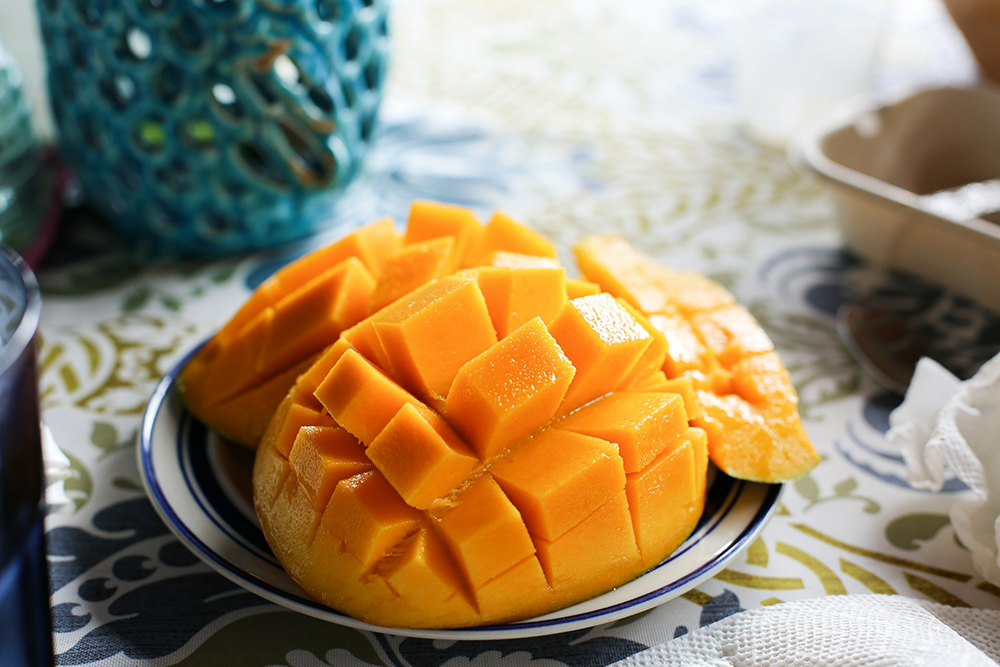In this article
View 2 More +Unlike cats who are obligate carnivores, dogs are omnivores. In addition to animal-based proteins, they can eat a range of vegetables and fruits, and we don’t just mean your everyday bananas and blueberries, either. Like us, dogs can indulge in exotic fruits from time to time!
That said, it’s important to know which fruits are safe and which ones are not. In this post, we’ll introduce 10 exotic fruits dogs can eat, but also give you a heads-up on fruits to stay away from.

The 10 Exotic Fruits Dogs Can Eat
1. Guavas
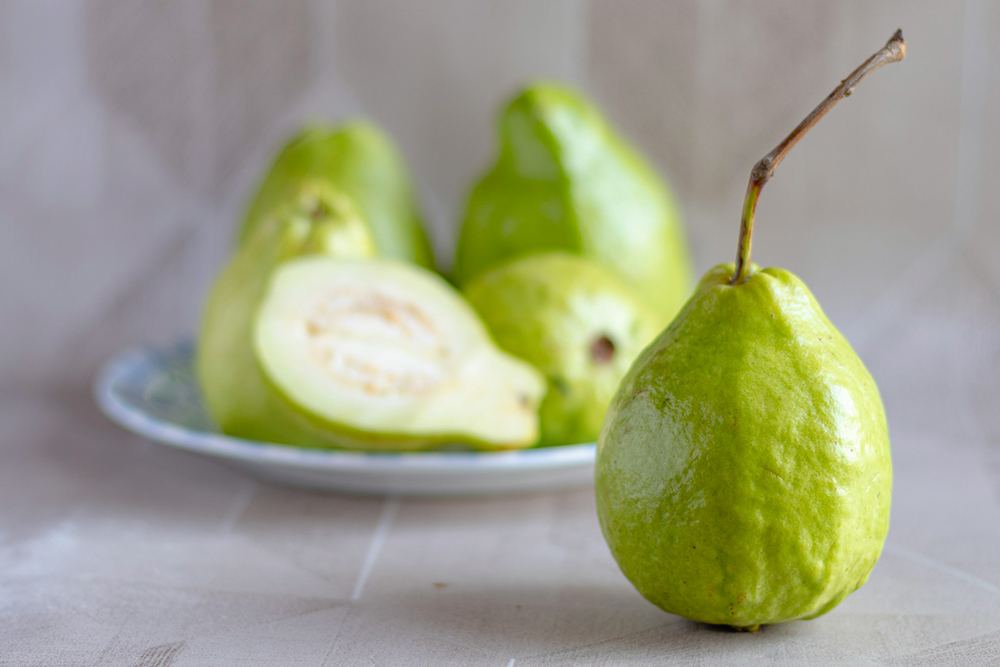
Guava—a fruit native to Central and South America and available in many varieties—is safe for dogs to eat in small amounts. It is rich in vitamin C and other important nutrients, including vitamin A, vitamin K, vitamin B, calcium, potassium, magnesium, and phosphorus. It’s also packed with antioxidants, which are beneficial for immunity.
As with other fruits, guava is not to be offered in excess because it’s high in sugar, so feed only in small pieces and occasionally. Remove the rind, seeds, and leaves, as these can be choking hazards, and the leaves are toxic. Avoid feeding guava paste to your dog because its high sugar levels could upset their stomach.
2. Pineapples
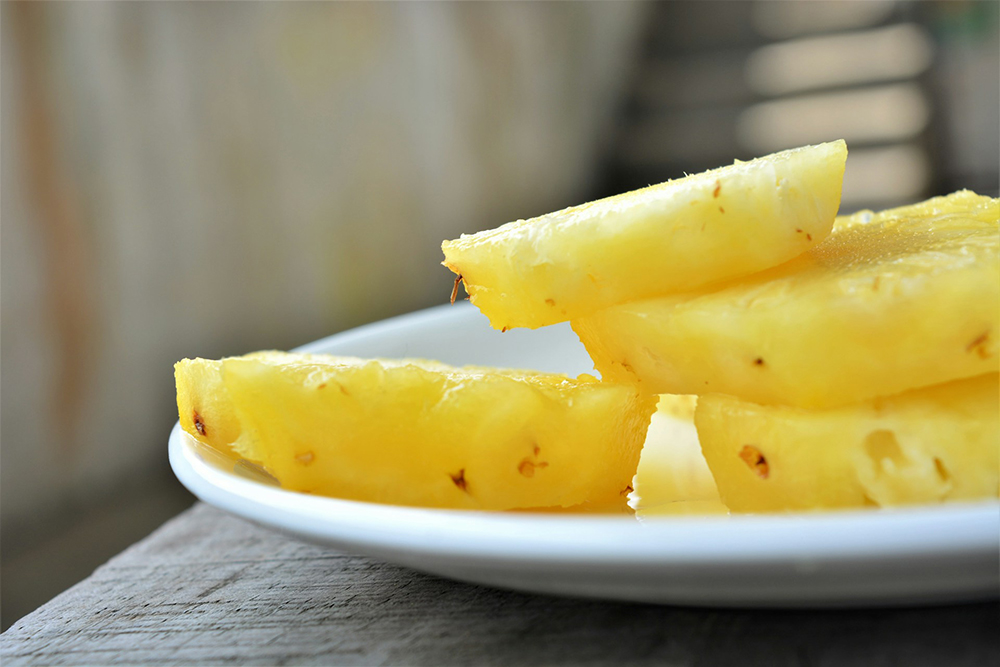
Pineapple fruit, in small amounts, is safe and potentially beneficial for your dog’s immune system thanks to its antioxidants. In addition to vitamins C, A, K, and B6, pineapple is a source of riboflavin, folate, thiamin, potassium, magnesium, and more. Its high water content makes it hydrating.
To prepare pineapple for your dog, remove the spiky exterior, core, and leaves, and cut the fruit into small chunks (each about 1/4-inch-thick). You can offer it occasionally as a treat, but not too regularly to prevent stomach upset. While raw pineapple is okay, avoid feeding other items like pineapple candies, cakes, pastes, and canned pineapple.
3. Kumquats
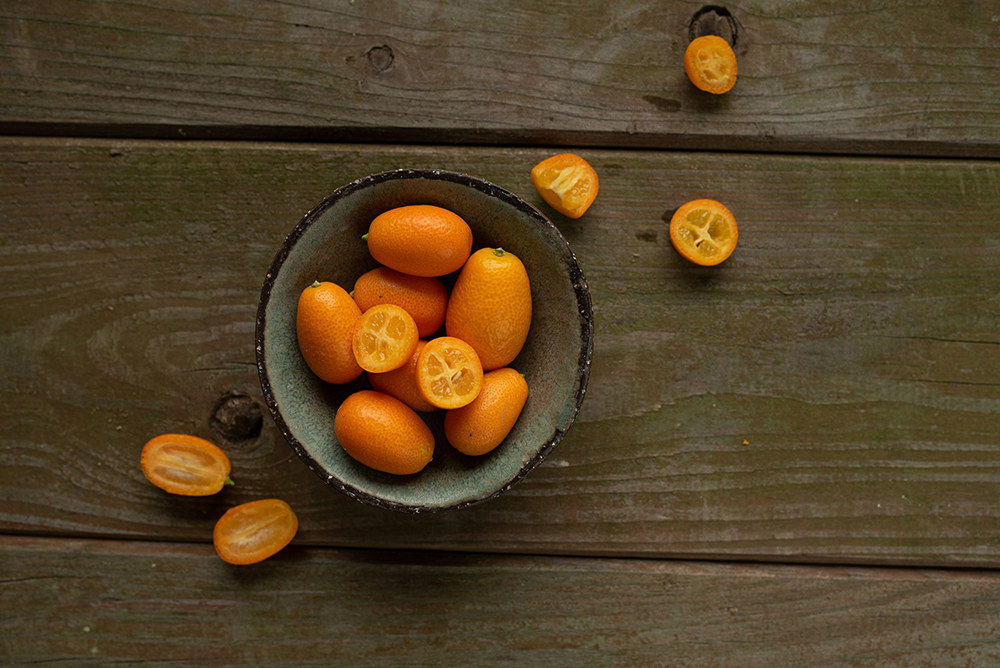
Kumquat—a fruit similar to oranges from Southeast Asia—is edible for dogs (not the peel, though—see below), but proceed with caution. Too much of this little citrus fruit can easily cause diarrhea due to their high acidity and the psoralen they contain.
Many dogs don’t like the smell and taste of citrus fruits, but if your dog does enjoy it, remember to only offer the flesh of kumquats in small quantities and avoid offering any seeds, leaves, and peel. The citrus oil in the kumquat peel may upset your dog’s stomach, and if enough is consumed, it could cause toxicity.
4. Mangoes
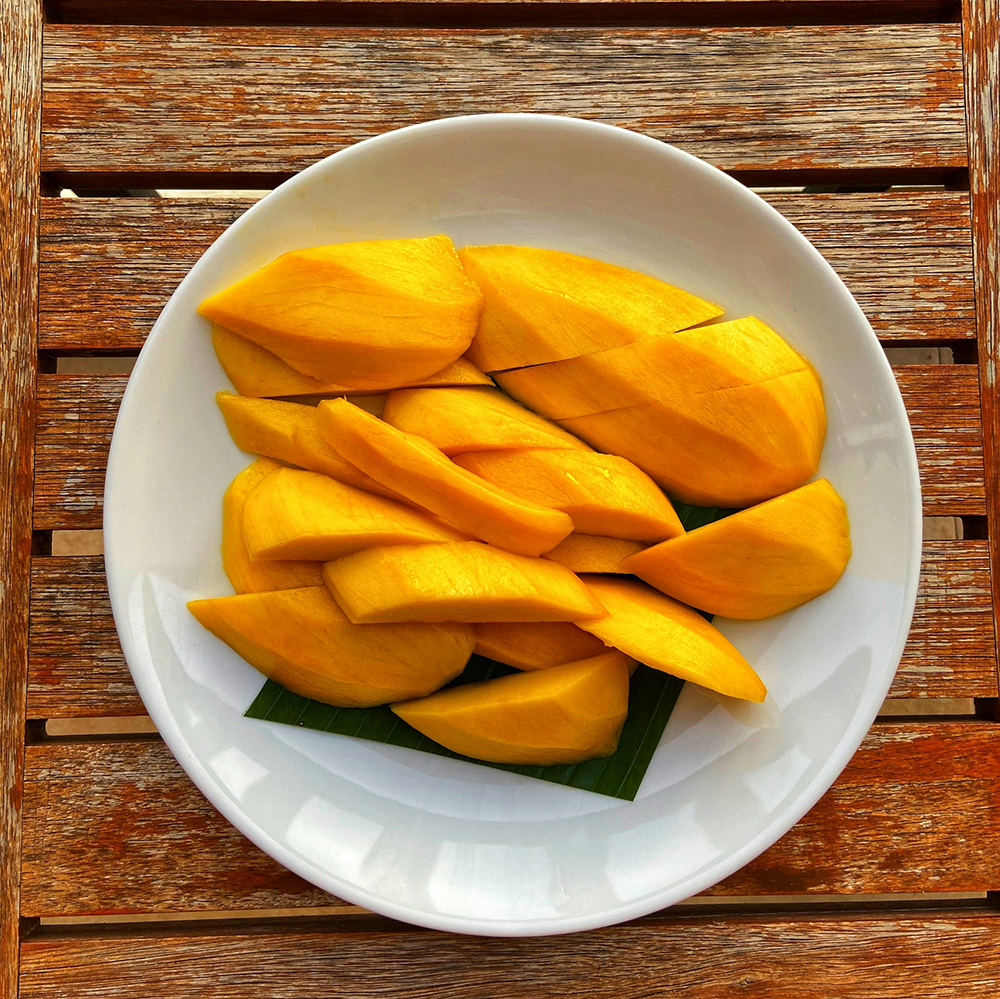
Mango is a source of vitamins C, E, B6, and A, and it’s got a high fiber content, so in moderation, it can be beneficial for the gut. However, while mango fruit is okay in moderation, the pit, peel, and leaves should always be removed. The pit is not only a choking hazard, but also a digestive obstruction hazard, which is why it’s so important not to let your dog eat it.
5. Dragon Fruit
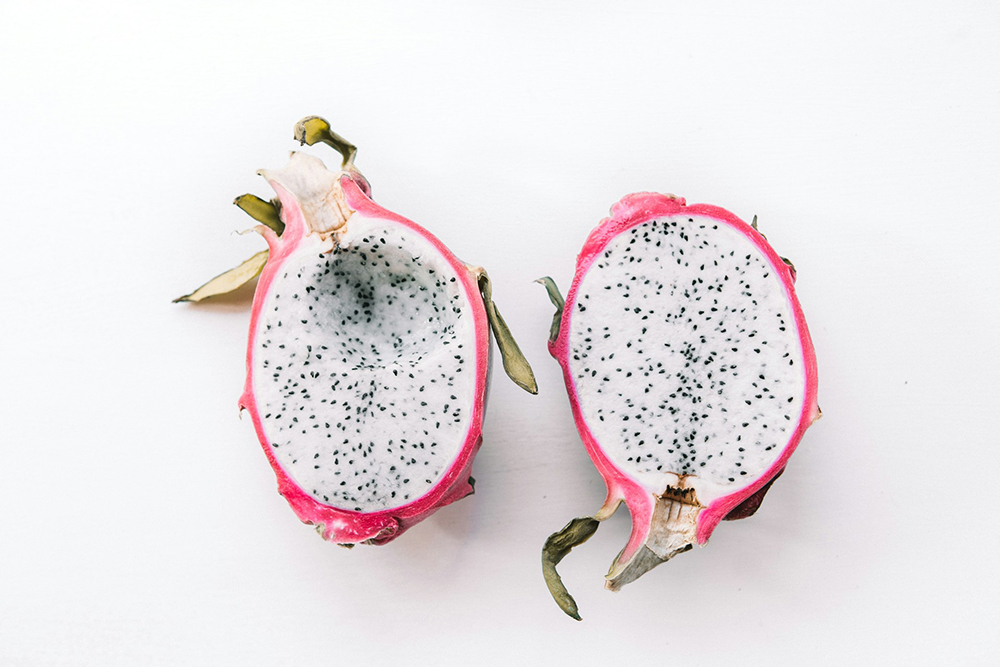
Dragon fruit, which is native to Central America, is safe for dogs, as are its small seeds. It’s a low-calorie food that’s high in vitamin C, fiber, and omega-3 and omega-6. Nevertheless, even though dogs can have dragon fruit, it should still be fed in moderation to keep the effects of too much sugar at bay. The spiky skin should also be removed.
6. Blood Orange

Dogs can have blood oranges, but only a little of the flesh itself from time to time if they enjoy it—no other parts. Citrus fruits are pretty acidic, so too much of a blood orange could easily cause an upset stomach. Moreover, like kumquat, the blood orange peel contains essential oil and psoralens, both of which are toxic to dogs. Fruit peels can cause intestinal obstruction, too, as they’re hard to digest.
7. Durian
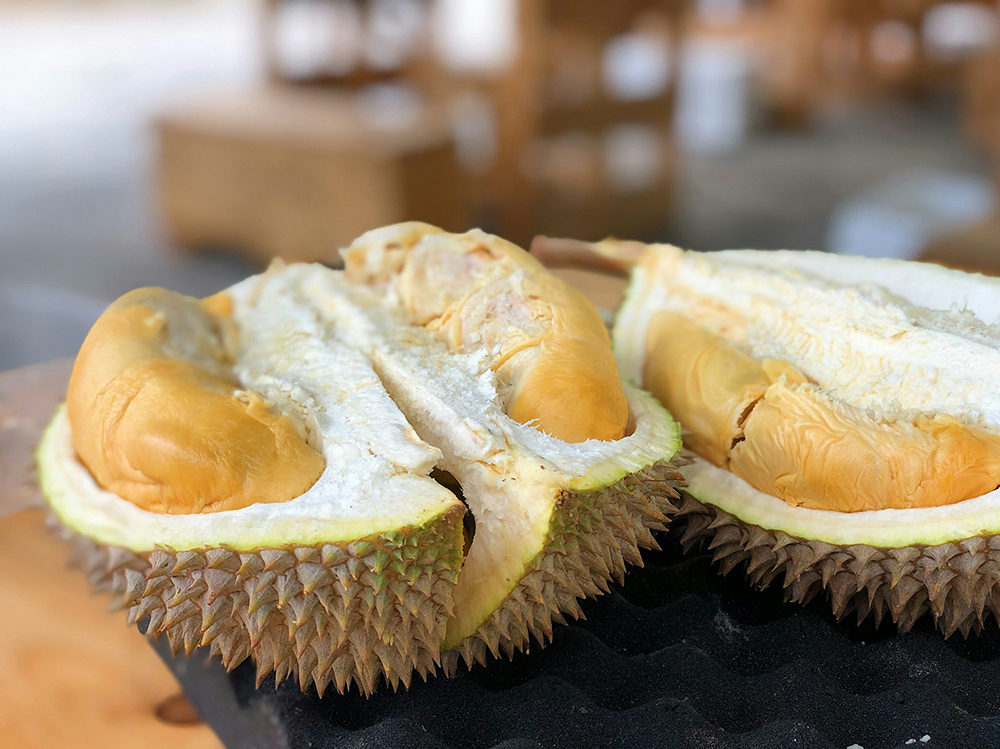
Durian is a nutrient-rich Southeast Asian fruit with a distinctive aroma commonly found in countries like Indonesia, Thailand, and China. It’s a somewhat divisive fruit that some love and others hate, but can dogs safely eat it?
The answer is yes—durian fruit is okay for dogs as long as it’s offered in small amounts and only occasionally. It’s a source of fiber and vitamins C and B. You probably already guessed it, but be sure to remove the rind and seeds.
8. Figs
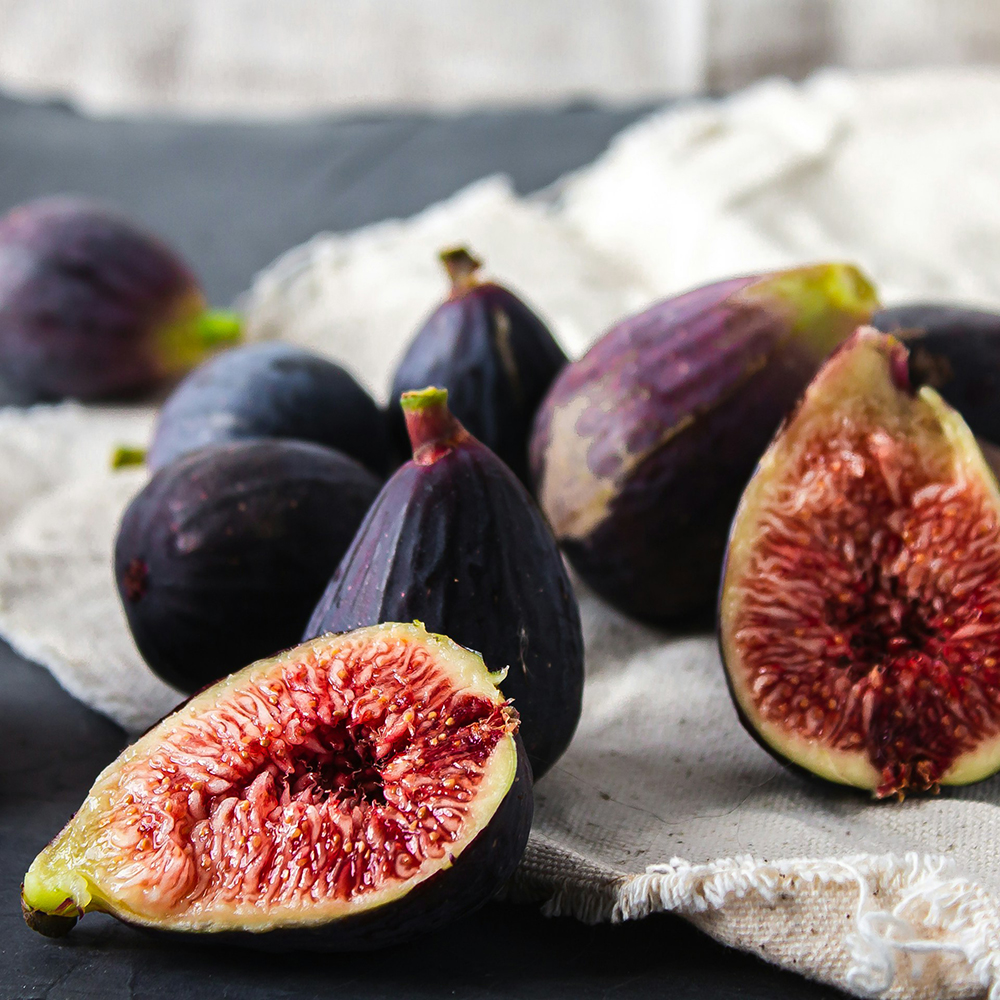
In small quantities, fresh figs are okay for dogs. They contain vitamins C and A as well as calcium, magnesium, potassium, and iron—nutrients that can be beneficial for various areas of health, including bone, heart, and digestive health.
However, dried figs are not suitable for dogs because they have a high sugar concentration. Furthermore, parts of the fig plant, including the branches, leaves, and bark, are all toxic and should be avoided at all costs.
9. Lychees
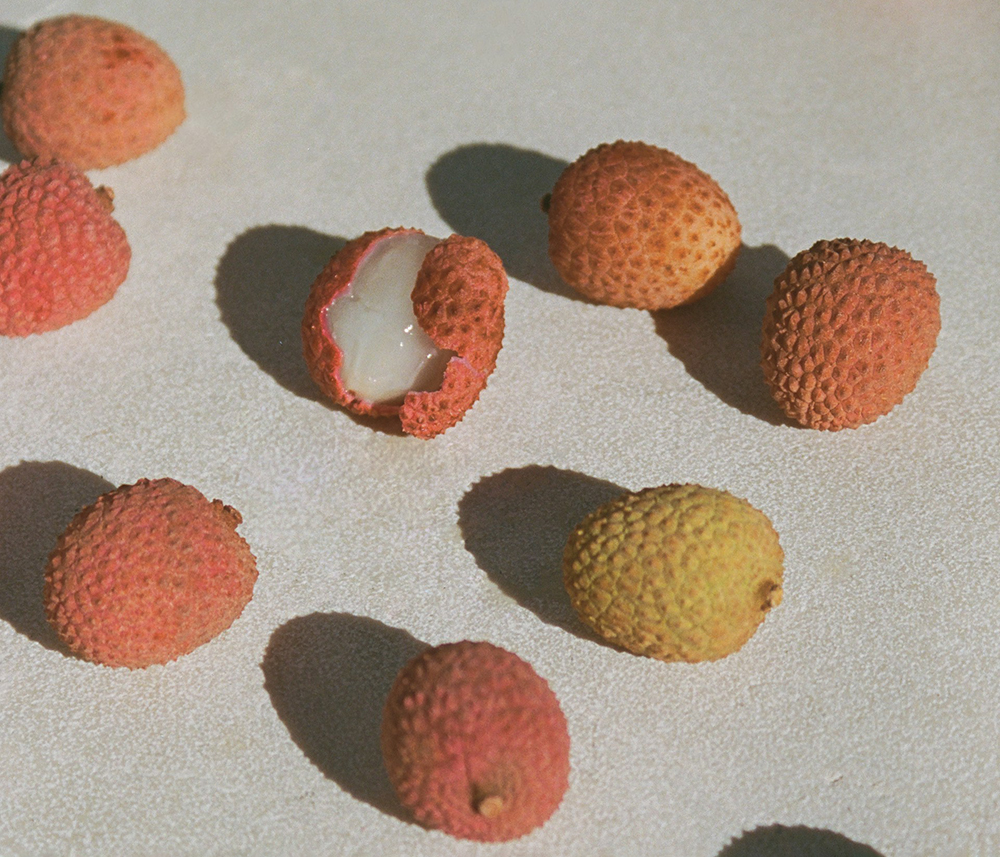
Ripe lychee flesh is fine for dogs to eat occasionally and in small amounts. Like other fruits, lychees are a source of vitamin C, but they’re also sugary, which is why moderation is so important.
It’s also essential to never offer the skin or seeds of a lychee to your dog due to the risk of choking and the fact that lychee seeds contain hypoglycin A which could make your dog unwell.
Stick to ripe lychees, too, as unripe lychees have also been linked to toxicity and low blood glucose levels in humans. While this information doesn’t refer to dogs, it’s best to be on the safe side.
10. Papayas
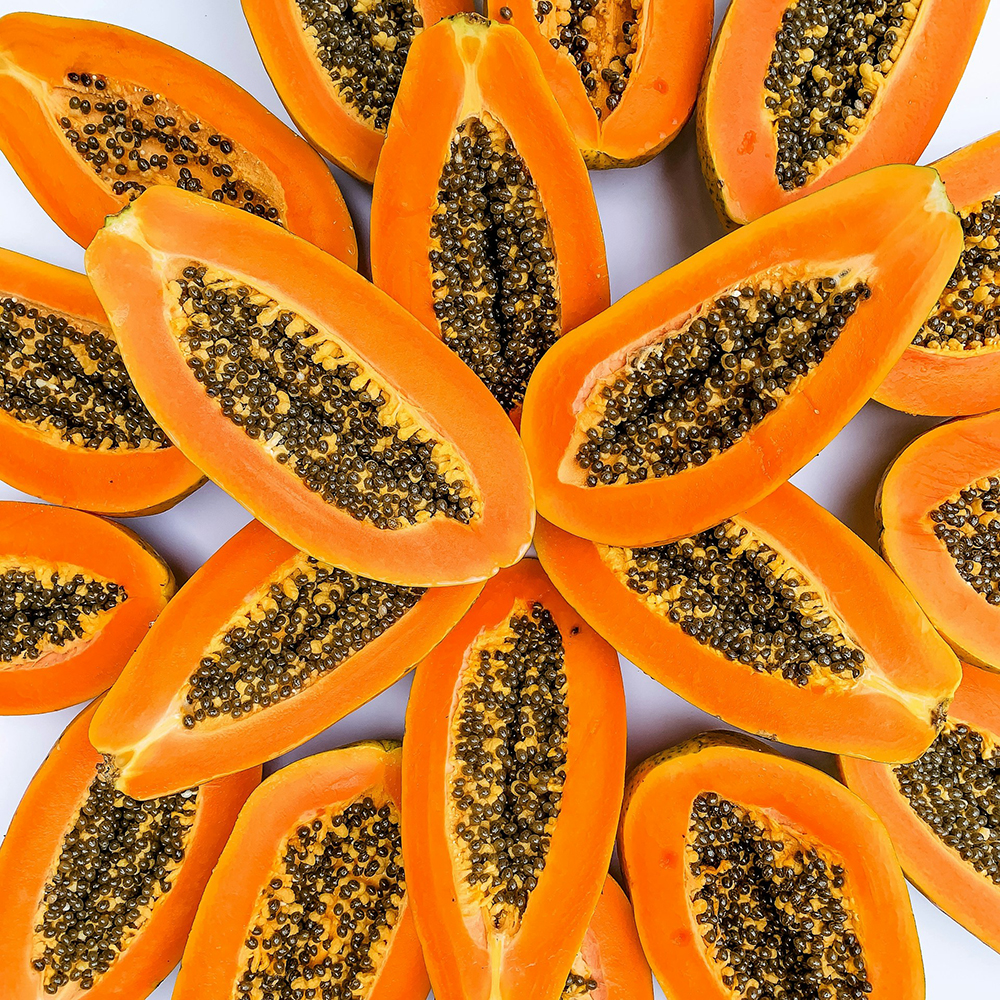
Papaya is another exotic fruit dogs can enjoy. A tropical fruit from Central America and southern Mexico, papaya is lauded for its health benefits, including being a source of vitamins A and C as well as fiber and potassium.
As usual, stick to small amounts of papaya only in bite-sized pieces and take off the skin and seeds.

Other Types of Exotic Fruits
Can Dogs Eat Acai Berries?
Unfortunately, the acai berry is a fruit to keep away from dogs because, like chocolate, it contains theobromine, a compound that’s toxic to dogs. However, the general consensus is that if your dog has managed to sneak a few acai berries, it’s unlikely to cause any serious issues. It’s always best to double-check with your vet, though, and keep an eye out for signs of ill effects.
It’s best not to feed these berries to your dog just to be on the safe side.
If you need to speak with a vet but can't get to one, head over to PangoVet. It's an online service where you can talk to a vet online and get the personalized advice you need for your pet — all at an affordable price!
Can Dogs Eat Passionfruit?
It’s not wise to feed passionfruit to your dog. The pulp contains cyanogenic glycoside, which is toxic to dogs because it may lead to cyanide poisoning. This is especially risky in fruits that are unripe. The seeds and rind can also contain these toxic compounds.
There are a lot of seeds in passionfruit, so removing them would be tricky. On that basis, it’s best not to attempt feeding passionfruit to your dog—even when ripe— as it’s simply too risky and impractical.
Can Dogs Eat Jackfruit?
Another Southeast Asian fruit, jackfruit is a relative of the mulberry. There isn’t much literature on whether or not jackfruit is safe for dogs, so it’s impossible to say with certainty. What we do know is that the ASPCA has ruled that mulberry—which is in the same family as the jackfruit—is non-toxic to dogs. In addition, there’s also no evidence to suggest that jackfruit is toxic to dogs.
Since there isn’t much certainty about jackfruit, it’s best to check with your vet before feeding it to your dog. The same goes for any new food you introduce.
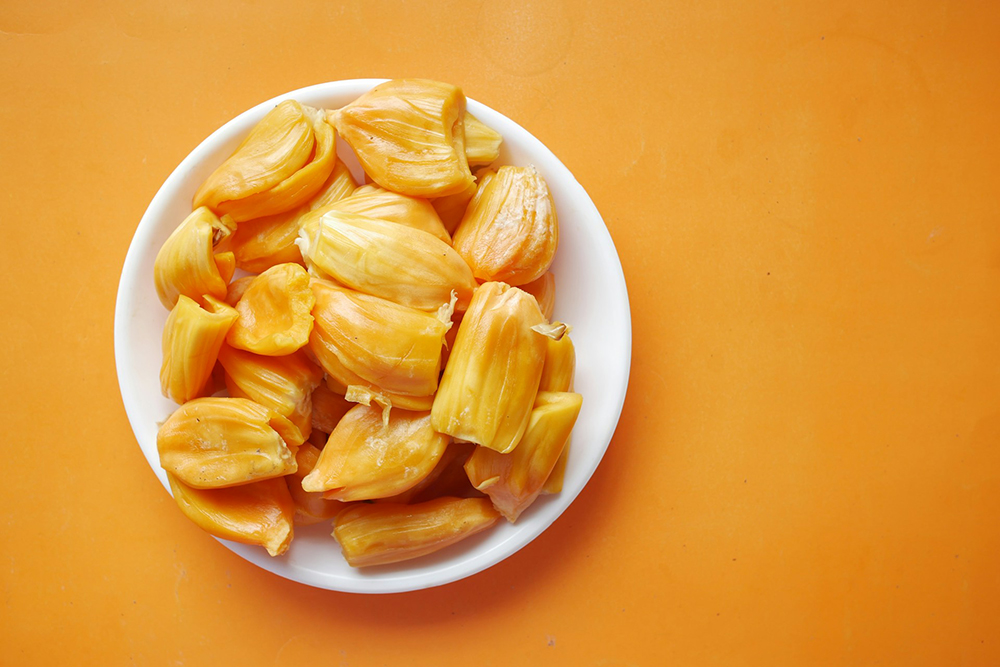
How Much Fruit Can Dogs Eat?
Fruit should never make up a large percentage of your dog’s overall diet and are best considered as occasional treats. Fruit is not a necessary part of your dog’s daily diet, they should be getting all their essential nutrients from their high quality regular dog food.
As we mentioned, it’s a good idea to check with your vet before offering new foods to your dogs, especially if they have any health conditions. If given the go-ahead, start slowly and monitor for any adverse effects. The exact amount you can offer differs depending on your dog’s size: What may be fine for a large dog may upset a small dog’s stomach. Fruit is high in natural sugars and feeding too much will also lead to weight gain. If we take papaya as an example, extra-small dogs should have less than a teaspoon’s worth, but extra-large dogs can have up to 1/4 cup.
Many experts go by the 10% rule, meaning only up to 10% of your dog’s daily calorie intake can be in the form of treats. The other 90% should consist of a complete, balanced formula for dogs.

Conclusion
There are plenty of exotic fruits your dog can indulge in as a treat, but they certainly shouldn’t be a part of their regular diet and should always be fed in moderation to prevent some unpleasant side effects.
See also:
- Are Watermelons Good for Dogs? Nutrition Facts & Feeding Tips
- Can Dogs Eat Rambutan? Is It Safe?
- Can Dogs Have Persimmons? Vet-Verified Nutrition Facts & FAQ
Featured Image Credit: Desirae Hayes-Vitor, Unsplash
